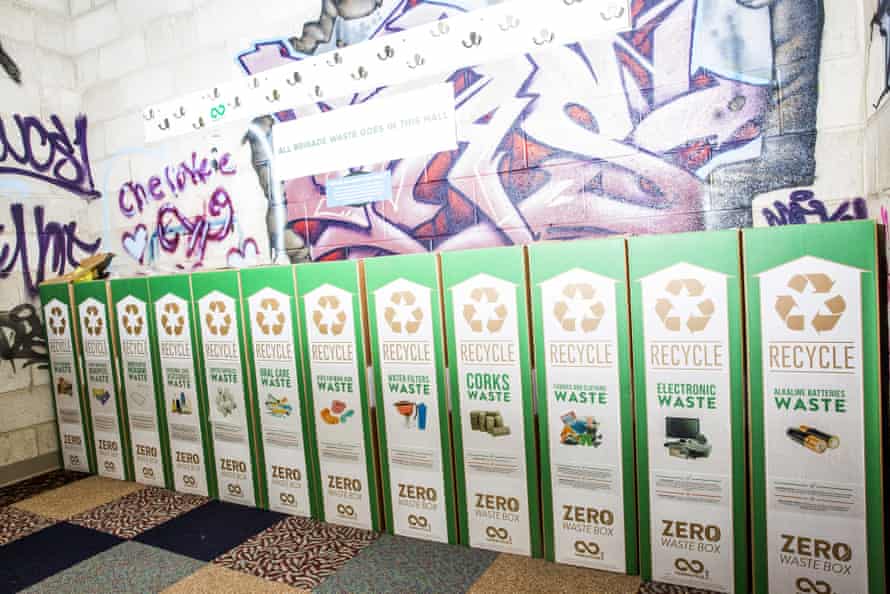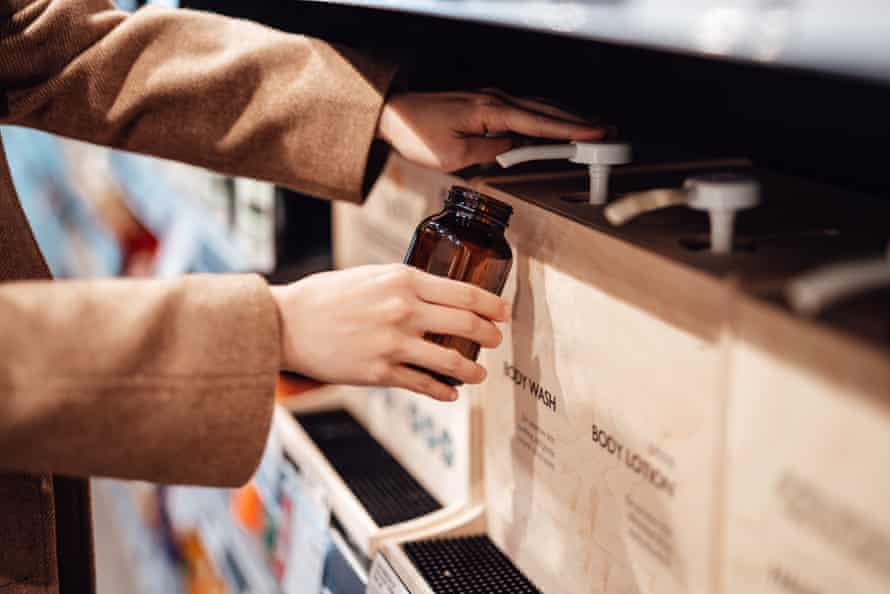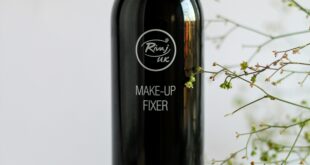Table of Contents
There are at least five different skincare serums in my bathroom cabinet at any one time. These sit next to three moisturisers, four foundations, and a tub of a dozen or so lipsticks. At least half of these beauty products are past their expiry date, and embarrassingly, none were bought with any real environmental regard.
The Australian beauty industry was valued at $5.1bn in 2020. Globally, it sat at $662bn. Looking through my cabinet, that’s easy to believe. What’s harder to stomach is knowing how much of this packaging will ultimately end up in the garbage bin.
It is difficult to find reliable figures on just how much waste the cosmetics industry generates, but Australia’s Department of Agriculture Water and the Environment notes “the vast majority of cosmetic waste ends up in landfill”. A product stewardship scheme, managed by take-back provider Close the Loop is expected to launch in mid-2022.
But in the meantime, when it comes to managing that waste, sustainability consultant Celeste Tesoriero says “unfortunately, a lot of the onus is on us as customers … And it shouldn’t be.”
Tesoriero describes the beauty industry as “super far behind the times” on sustainability and says the level of waste is “astronomical”. Before more robust programs are developed, there are a lot of simple and small changes you can make to tackle the problem at home.
Know your expiration dates
All makeup and skincare products come with expiration dates which kick in when the product is opened. As a general rule, mascaras last three to six months, while creams, powders and foundations last between 12 and 18 months, and lipsticks can be good for up to two years.
Expiration dates are printed either on a product’s outer packaging or on the container itself. Look for an open jar symbol followed by a number and the letter ‘M’. This signifies how many months you have to use the product. If a leaping bunny symbol is nearby, that means it’s also certified cruelty free.
Being aware of expiration dates allows you to only buy only as much of something as you can use within its active stage, and avoid throwing out barely used products later.
“With fashion, you can still wear an old T-shirt ten years later. Whereas with beauty, things go off, so bigger is not always best,” Tesoriero says.
According to Dr Deshan Sebaratnam, a dermatologist and senior lecturer at UNSW, expiration dates are less about mass consumerism and more about skin safety.
“Using expired products may mean that you are using skincare products that don’t work or may have degraded to harmful compounds,” he says. “For instance, preservatives are used in most skincare products to stop germs breeding. If the preservatives lose their functionality then bugs can grow in your skincare products.”
In addition to germs, expired products can also lead to allergic reactions or rashes, and at the very least, lose potency and effectiveness.
Put leftover products to good use
If a product is still within its expiration period but you know you won’t use it, charities across the country like Every Little Bit Counts, Friends with Dignity, and New Day Box accept donations and pass products on to people in need.

If you’re wanting to recoup costs, Facebook Marketplace and eBay both allow the selling of new and partially used products.
Working your way through that stash of sample sachets and hotel toiletries before heading to a store is also a good way to avoid purchases.
Dispose of what’s left
Even the most diligent of beauty minimalists wind up with expired products from time to time. And that’s OK, so long as they’re disposed of the right way.
The best option is to drop off expired products at your nearest council waste centre, where specialists can dispose of products appropriately. In instances where this isn’t possible, products should be thrown into the bin for landfill.
Importantly, washing unused products down the sink should be avoided. Almost all beauty and skincare products contain chemicals (either to stabilise formulas, add scent, or enhance functionality) or microbeads and microplastics. While these chemicals may be safe for use, they can cause serious harm to waterways – not to mention your household plumbing.
Recycle … the right way
Sustainability within the beauty industry is complicated. A single product is often made up of multiple plastics, all with different recycling requirements and packaging standards specific to ingredients.
CEO of anti-waste group Australian Packaging Covenant Organisation, Brooke Donnelly, recommends looking for beauty brands with product refill options or that use minimal or environmentally-friendlier packaging. It is also possible to return empty or-almost empty products to stores like Mecca, MAC, Estee Lauder, Priceline, and David Jones, who all offer TerraCycle bins. Alternatively, empty products made of soft plastics can be disposed of in REDcycle bins.
“Consumers can play a vital role in pressuring companies to do more to make their packaging sustainable,” Donnelly says. “Voting with your wallet at the cash register by choosing sustainable packaging sends a clear signal to businesses that they need to get on board and make changes to help us achieve a circular economy for packaging.”

Buy less
Arguably the biggest step in reducing waste is to simply buy less in the first place. Finding versatile products that tick multiple boxes in one, like a tinted sunscreen that acts as a daily moisturiser, foundation and sun protector, cuts three products down to one.
“It’s about decluttering and buying products that are a bit more ethically produced,” Tesoriero says. “That may be a little more expensive initially, but because you’re buying less it all evens out anyway.”
Tesoriero also warns against impulse shopping, a behaviour the beauty industry is exceptionally skilled at inspiring. “If you need to buy nail polish, just buy one instead of a three-pack.”
Buy smarter
Product design and packaging are other significant contributors to the beauty industry’s waste problem. For research director at UTS’s institute for sustainable futures, Dr Nick Florin, this means looking for “naked” products with minimal packaging, and containers made from glass or aluminium.
Though pretty packaging is often part of a product’s appeal, he suggests avoiding elaborate “over design” and places the onus on the industry to change its ways too.
“It’s great to see recycling solutions, but the first priority should really be looking at using less materials and designing packaging to avoid consumption and waste in the first place,” he says.
“The next priority should be looking at reuse – so, refills, and take back packaging, then looking at better recycling. But ultimately, it should all feed back into design, because companies design the product at some point.”

Donnelly agrees, saying, “beauty brands should be in the process of phasing out any single-use and problematic plastic packaging”.
Many products, however, include two plastics listed as “on notice” in APCO’s 2025 action plan for problematic and unnecessary single-use plastic packaging – plastic hand pumps used on soap bottles and lotion products, and small caps and closures used on smaller products like moisturiser tubes and lip balm, which Donnelly says pose a number of issues when it comes to recycling due to their size, and the internal components of pumps, respectively.
“Eliminating these … will help to ensure valuable materials aren’t lost to landfill and can go on to be used in other products,” she says. She notes that simple swaps like using bars of soap over liquid hand and body washes can also make a big difference.
Normalise the change
Much like designated organic sections in supermarkets, Tesoriero says consumers should use their voices to normalise the presence of ethical and sustainable beauty options long term.
“One thing that I’ve started doing a lot of is walking up to the counter and asking where the ethical and sustainable products are, which is sort of creating that demand for the staff.”
Looking into a bathroom cabinet can seem daunting. But taking accountability for its waste – and encouraging the brands responsible to change their ways – doesn’t have to be. Tesoriero points to the shift in fashion consumption. For years, that industry has faced criticism for its sustainability issues, which Tesoriero says “isn’t without reason”.
If we’re willing to change our relationship with clothing for the good of the planet, she believes it is possible to do the same with our toiletries.
https://www.theguardian.com/fashion/2022/apr/25/how-to-cut-down-cosmetic-waste-beauty-products-go-off-so-bigger-is-not-always-best
 fashion rec fashion wanted
fashion rec fashion wanted

